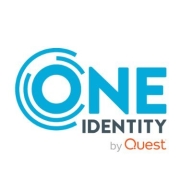


One Identity Manager and AWS Identity and Access Management compete in the identity and access management category. AWS Identity and Access Management appears to have the upper hand due to its robust features and perceived value.
Features: One Identity Manager provides a comprehensive set of features for supporting complex organizational identities and workflows, flexibility, and extensive customization options. AWS Identity and Access Management offers seamless integration within the AWS environment, allowing granular policy management, exceptional scalability, and ease of access control in cloud environments.
Room for Improvement: One Identity Manager could improve in areas like simplifying deployment processes, enhancing user interface intuitiveness, and simplifying policy management implementation. AWS Identity and Access Management could benefit from expanding support for non-AWS services, improving integration with enterprise environments outside AWS, and simplifying its policy creation interface for less-experienced users.
Ease of Deployment and Customer Service: One Identity Manager's deployment process is complex, requiring significant resources, but this is counterbalanced by their responsive customer support. In contrast, AWS Identity and Access Management offers straightforward SaaS deployment, backed by extensive documentation and support resources that guide users through setup and troubleshooting.
Pricing and ROI: One Identity Manager requires a higher upfront cost but is aimed at delivering strong ROI in complex environments due to its targeted identity management approach. AWS Identity and Access Management provides cost-effective pricing options particularly suitable for businesses integrated into Amazon's ecosystem, offering a balance of cost with extensive feature sets.
I believe AWS provides significant ROI by reducing infrastructure costs and improving scalability and business agility.
AWS Identity and Access Management ensures security and allows for scalable application deployment.
It saves time by not requiring extensive manual setup.
Without it, we would need thousands of additional people.
If you do not see it as purely an Identity Management tool but as a possibility to automate processes in the company, it provides a huge amount of value.
One Identity Manager saved us approximately thirty to forty percent in terms of time, money, and resources compared to our pre-deployment setup.
We do not contact their technical support directly because we have a service agreement already in place with them with some dedicated and some non-dedicated resources.
Responses from AWS engineers aren't always direct, so when urgent issues occur, I manage them immediately and prioritize solutions.
The service is straightforward, and I haven't encountered much complexity.
We haven't needed to contact technical support as the IAM tool is intuitive and configured on our end.
If you have outages or critical production problems, you can count on the manufacturer to help resolve the situation.
If I raised a request while they were active, I received responses within an hour.
After submission, they contact the product team, which often takes one or two months to respond.
Scalability in AWS is significantly easier compared to on-premise solutions.
I implemented centralized and scalable solutions to improve larger setups.
The system's scalability could be enhanced to support larger organizations and better integrate with existing applications.
We could handle about 1,00,000 records for different users.
I would rate its scalability as strong since we have not experienced any significant challenges.
We are hosting it centrally in Switzerland.
It was initially tough to identify the cause, yet by simplifying user management and utilizing group roles, I have managed to solve these issues.
AWS Identity and Access Management is designed to keep networks secure by ensuring only authorized users can access necessary data.
AWS Identity and Access Management is very stable.
I would rate it a nine out of ten for stability.
Specifically affecting the test and development environments, not the production environment.
One Identity Manager has improved in terms of performance and added functionality.
The biggest issue, which is the reason why we are transitioning from their product to SailPoint, is the overall user experience.
If AWS could provide an option to automatically create templates based on desired access requirements, it would be extremely beneficial, especially for documentation and troubleshooting purposes.
AWS Identity and Access Management needs improvement in the prevention of unauthorized access to sensitive data and models.
The user activity tracking in AWS Identity and Access Management should be enhanced to provide detailed descriptions of user activities.
This lack of 24-hour support is problematic from a testing and development standpoint.
It is crucial for them to expand their support team to match their product's success.
In terms of providing a single platform for enterprise-level administration and governance of users, data, and privileged accounts, One Identity is not yet there.
They are lower than some of their competitors.
Initial setups do not require significant capital expenditures, making it advantageous for organizations to utilize AWS services.
Azure is often chosen for cost-efficiency.
While it offers good value for money, a reduction in costs would be appreciated by any organization.
On-premises might incur higher costs.
We have a good enterprise license agreement, and we are very happy with what we get for the price we pay for it.
On-premises, it is cheap.
Technically, the product does everything one would expect from an identity and access management platform.
The solution enables differentiation in tasks, such as managing cross-account access, setting service roles, and integrating corporate directories for temporary AWS access.
Its role-based access control enhances security by allowing me to assign specific permissions to users, which helps in managing access and maintaining cost control.
Specific permissions can be given to users, allowing tailored access to instances and S3 buckets.
It ensures high security through multiple approval processes, preventing unauthorized access and enhancing compliance by providing time-based access for privileged accounts with proper audit trails.
It continuously monitors user behavior in real-time, triggering automated responses, and manages secure access for both on-premises and cloud applications using protocols such as SAML.
Once you have some experience, it demonstrates best practices and guides you on the correct way to use the tool.



Omada Identity is an identity governance and administration (IGA) solution designed to help organizations manage and secure digital identities and access across their IT environments. It focuses on enhancing security, compliance, and efficiency by automating identity management processes.
Omada Identity offers a robust set of features that streamline identity lifecycle management, access governance, and compliance reporting. It integrates with a wide range of IT systems, applications, and data sources, providing a centralized platform for managing user identities and access rights. The solution enables organizations to enforce security policies, ensure regulatory compliance, and reduce the risk of unauthorized access.
What are the critical features of Omada Identity?
What benefits or ROI items should users look for in the reviews when evaluating Omada Identity?
Omada Identity is widely adopted across various industries, including healthcare, finance, and manufacturing. In healthcare, it helps protect patient data and comply with regulations like HIPAA. In finance, it ensures compliance with SOX and other financial regulations. In manufacturing, it secures access to sensitive production data and intellectual property.
Pricing and licensing for Omada Identity are typically based on the number of users and the specific features required. Customer support is available through various channels, including online resources, support tickets, and professional services for implementation and customization.
In summary, Omada Identity is a comprehensive IGA solution that enhances security, compliance, and efficiency in managing digital identities and access.
AWS Identity and Access Management allows organizations to manage user permissions, secure access controls, and simplify authentication. It supports multi-factor authentication, integrates with AWS services, and provides robust role-based access management.
AWS Identity and Access Management is instrumental for organizations in defining detailed policies, monitoring activity, and maintaining compliance. With its strong security controls, granular permission settings, and seamless integration with other AWS services, it simplifies the creation and management of roles and users. Its detailed logging, role delegation, and multi-factor authentication enhance security, while scalability and ease of managing user access are notable advantages. Some users see room for improvement in setup processes, documentation, navigation, integration with other AWS offerings, learning curve for new users, and providing more granular control options.
What are the most important features?In industries such as finance, healthcare, and technology, AWS Identity and Access Management is used to ensure compliance with strict regulatory standards, secure sensitive data, and streamline access controls across complex environments. This allows organizations to focus on their core operations while maintaining robust security and compliance measures.
One Identity Manager is a value-added and trusted active directory management and user provisioning software solution. One Identity Manager administers and protects an organization’s data and users, minimizes threats, and ensures that compliance regulations are consistently satisfied.
Users will have access to the data and applications they need when they need them. One Identity can be used on premises, in the cloud, and also with hybrid options. One Identity Manager is able to easily combine strict governance compliance regulations and rigorous security protocols to keep business enterprises secure and functional today and into the future. One Identity Manager is also a robust, scalable identity governance and administration (IGA) solution. The solution is designed to meet the changing needs of a growing dynamic business enterprise, and not be limited or left vulnerable by IT department constricts.
One Identity consistently provides robust security solutions that facilitate a strong secure enterprise where the users, applications, and critical data are safe and secure. The unified identity security platform provides identity governance and administration (IGA), privileged access management (PAM), active directory management and security (ADMS), and identity and access management (IAM) processes to ensure an aggressive stance on security for today’s dynamic enterprise organizations.
One Identity is used by more than 11,000 organizations worldwide managing over five hundred million plus identities.
One Identity Manager Features
Reviews from Real Users
“The initial setup process for an employee is straightforward. We set up processes for user accounts and we can add other processes to them. Our goal is to automate all user-permission and user-administration processes with One Identity and we are doing that more and more.” - Marc H., IT Architect at a tech services company
“The most valuable features are that it has a lot of capabilities, can integrate with a lot of systems, including automated onboarding like CyberArk, and allows you to integrate different entities.” - Security Consultant at a financial services firm
We monitor all Identity Management (IM) reviews to prevent fraudulent reviews and keep review quality high. We do not post reviews by company employees or direct competitors. We validate each review for authenticity via cross-reference with LinkedIn, and personal follow-up with the reviewer when necessary.